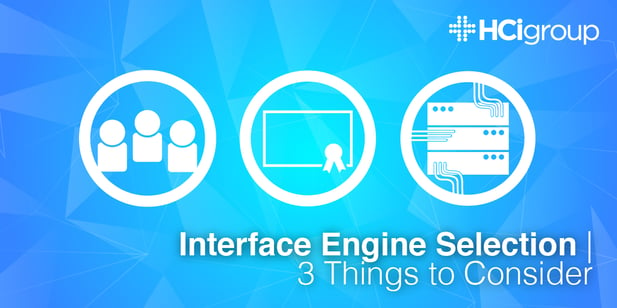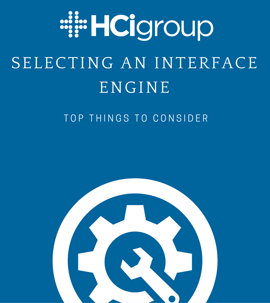
In this post, HCI Integration VP's Mark Jackson and Scott Hassler discuss three things an organization should consider when selecting an interface engine. Selecting an interface engine that is not a good fit for your business can create many problems both before and after implementation. Keep these three considerations in mind when selecting an interface engine in order to ensure the best fit for your organization.
 1) Matching the Skill Set of the Staff to the Interface Engine
1) Matching the Skill Set of the Staff to the Interface Engine
One of the most important things to consider when selecting an interface engine is to make sure that the one you select can easily cater to your internal staff’s skillset. There will probably be some new things that your current staff will have to learn with the inception of a new interface engine, so make sure to pick one that doesn’t require even more training. There are multiple engines that are on the market today; some focusing on Java hosting, some focusing on proprietary type languages, among others such as Rhapsody or Cloverleaf. It would be best to not have to bring in additional consultants to help your staff if it is not necessary, especially since there are so many different kinds of engines out there that can most likely cater to the knowledge that your current staff already possesses.
2) Interface Engine Training and Certification
Various funders have multiple levels of certification that are required to fully optimize an interface engine. These certifications can take time for your staff to master, ranging from weeks to even months to acquire. This is not the case with all interface engines, however, as some are going to be a bit more user friendly, and require nothing more than a point-and-click type of orientation. The cost and amount of time necessary to train your staff in order to get them certified in the interface engine that your organization chooses should also be kept in mind.
3) Interface Engine Hosting
The size of your organizations health system, along with their ability to host the interface engine themselves, should also be considered when choosing the one that is right for you. For example, if your organization needs to utilize a Cloud, there are several different vendors that have Cloud technology for the interface engines. There are also several opportunities for your organization to pay licensing fees for interface engines to scale them to the size that you require. There is no point in getting an interface engine that is not going to be compatible with the way in which you store and transmit data.
These are just a few of the things that an organization should consider when selecting an interface engine. Remember that picking which interface engine is a perfect fit for your business is a process. It takes time and careful consideration, and therefore should not be taken lightly or without ample research beforehand. For a more detailed example of what you should consider when selecting a new interface engine, be sure to take a look at the top 5 things to consider when selecting the right interface engine.
Subscribe to our blog and stay up-to-date with the latest expertise below.
